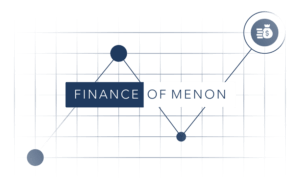Have you noticed your morning breakfast becoming pricier? You’re not alone. Across the globe, consumers are feeling the impact of rising food prices and climate change is a major factor driving this shift. The extreme weather events we’re seeing today are affecting the world’s largest agricultural producers, creating a ripple effect that hits our wallets.
Climate Change’s Impact on Coffee and Orange Juice
Brazil, the world’s largest producer of coffee and orange juice, has been facing some of its worst droughts in decades. This, along with wildfires and the spread of diseases in citrus crops, has drastically reduced supply. In April 2024, the retail price of frozen orange juice concentrate in the U.S. reached an all-time high, nearly doubling from pre-pandemic levels.
Coffee prices are also skyrocketing. Robusta beans, the primary beans used in instant coffee, have seen dramatic price increases. Unpredictable weather patterns in Brazil have disrupted coffee crop cycles, pushing up grocery prices.
But Brazil isn’t the only coffee producer affected by climate change. Vietnam, another key player in the global coffee market, has also faced significant output reductions due to droughts. The combination of challenges in both countries has led to higher costs for consumers, with no immediate relief in sight.
Global Food Supply Chains Under Stress
This increase in prices is part of a larger, troubling trend. Climate change is increasing the frequency and severity of weather events, from droughts to floods. These extremes are wreaking havoc on global food supply chains, raising prices across the board.
For example, cocoa prices have surged due to El Niño-driven droughts in West Africa, while Mediterranean countries like Spain—famous for producing olive oil—have experienced dangerously low water reserves after a scorching summer. These conditions have pushed olive oil prices to record highs in 2024.
Excess Rainfall and Frosts Worsen Food Shortages
While droughts are creating challenges, excessive rainfall is causing problems too. In autumn 2023, heavy rains in Europe delayed potato harvests, significantly increasing their prices. Even frosts have contributed to the issue—spring frosts in Poland, Europe’s largest apple juice producer, sharply reduced apple yields this year, contributing to higher apple juice prices.
The Future of Food Prices
Unfortunately, as weather patterns grow more volatile, food prices are expected to keep rising. Some estimates suggest that climate change could drive food inflation up by 0.9% to 3.2% by 2035. For consumers, this means we can expect to see continued price hikes in everything from coffee to cocoa to potatoes. As extreme weather events become more frequent, without significant action, these trends may become the new normal.
What Can You Do?
As we continue to feel the effects of climate change on our everyday lives, it’s crucial to consider how these rising prices will impact your financial strategy. The long-term costs of climate-induced inflation on food may require adjustments in budgeting and spending habits.
Is your financial strategy prepared for the rising costs of basic goods? Speak to Shabrish about how to hedge your investments against inflation and stay ahead!
Disclaimer: Nothing here should be considered investment advice. All investments carry risks, including possible loss of principal and fluctuation in value. Finomenon Investments LLC cannot guarantee future financial results






